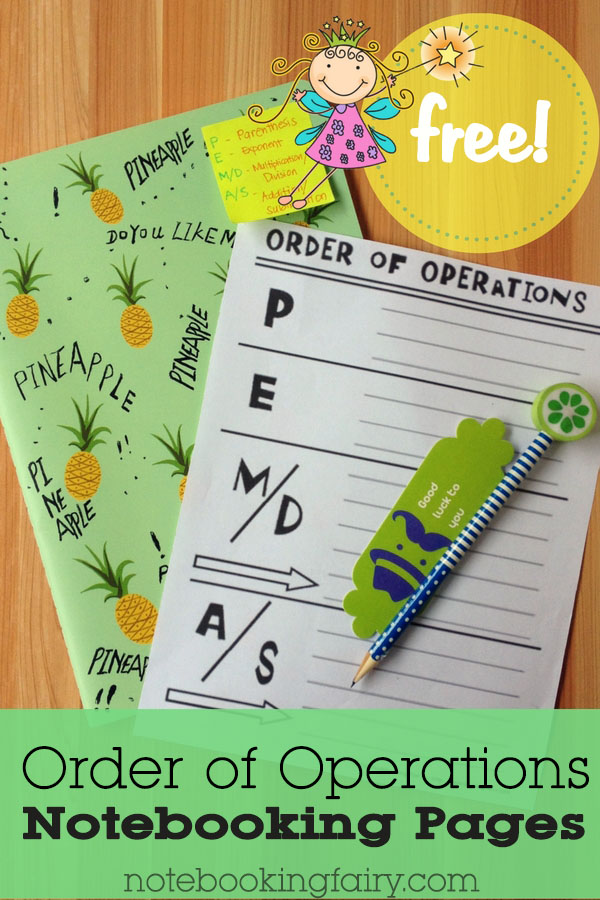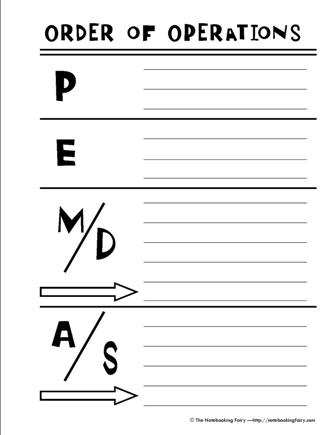- in Math , Printable Pages by Jimmie Quick
Order of Operations Notebooking Pages

Do you remember this quirky sentence, “Please excuse my dear Aunt Sally?” That is the mnemonic device commonly used for memorizing the mathematical order of operations.
- Parenthesis
- Exponents
- Multiplication and Division from left to right
- Addition and Subtraction from left to right
Here is a free, printable notebooking page for writing about the order of operations.
As always, I love to hear when you use the free printables from The Notebooking Fairy in your homeschool. If you send me photos, I will feature you in a Show Off post.

